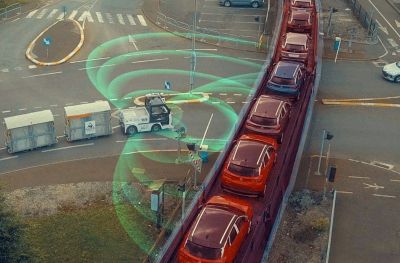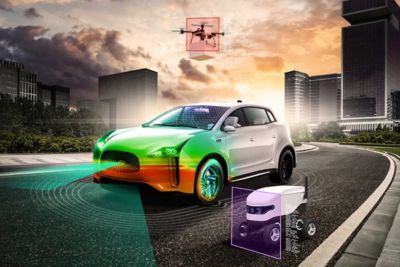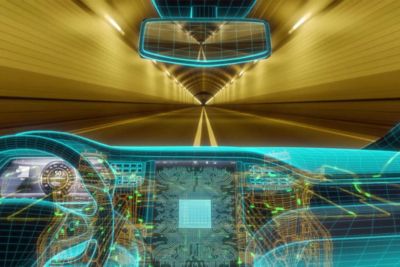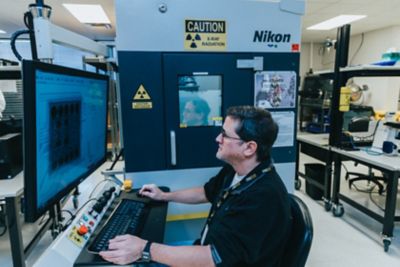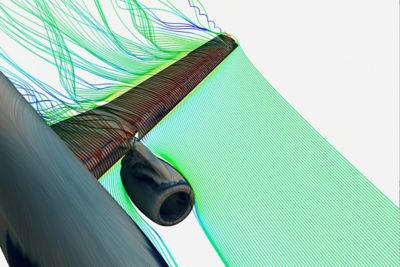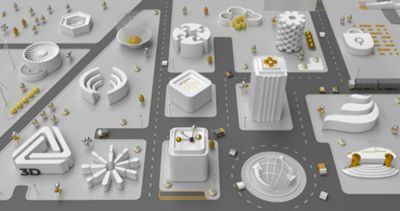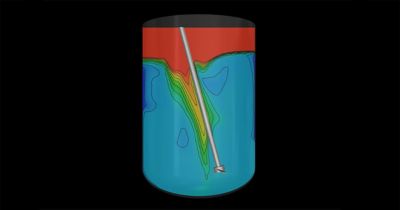-
United States -
United Kingdom -
India -
France -
Deutschland -
Italia -
日本 -
대한민국 -
中国 -
台灣
-
Ansys is committed to setting today's students up for success, by providing free simulation engineering software to students.
-
Ansys is committed to setting today's students up for success, by providing free simulation engineering software to students.
-
Ansys is committed to setting today's students up for success, by providing free simulation engineering software to students.
-
Contact Us -
Careers -
Students and Academic -
For United States and Canada
+1 844.462.6797

Ensure asset health performance and life cycle optimization with digital twins.
With the integration of Industry 4.0 and 5.0 technologies, digitalization is transforming global industries, including heavy machinery and the industries that depend on it. Plants and other sites are implementing predictive maintenance and other efficiency-first industrial practices like asset health performance and life cycle optimization to increase heavy machinery’s safety, reliability, and lifespan. The global predictive maintenance market is expected to grow from $13.65 billion in 2025 to $70.73 billion by 2032, according to a study from Fortune Business Insights. The growing implementation is powered by digital engineering, including multiphysics simulation and key technologies like digital twins.
Ansys hybrid digital twins uniquely blend physics and data, enabling real-time monitoring, predictive maintenance, and performance optimization across operating scenarios while automatically adapting to changing environments and conditions. This increases efficiency, reduces waste, and lowers costs. In addition, digital twins can be used as virtual sensors to track equipment degradation and failure. This serves as a viable solution for industries that involve extreme temperatures or environments, which can make physical sensors impractical.
As a result, heavy machinery manufacturers and operators can leverage digital engineering through simulation and digital twins to improve asset health performance and optimize the life cycle of their equipment while supporting sustainability.

Digital engineering supports asset health performance and life cycle optimization of tractors and other heavy machinery used frequently in agriculture.
Boost the Performance and Lifespan of Heavy Machinery
Heavy machinery, also known as heavy equipment, refers to large, powerful machinery designed for industrial applications that require force, durability, and precision. Heavy machinery is used in industries such as construction, manufacturing, mining, agriculture, forestry, and industrial heating, ventilation, and air conditioning (HVAC).
Equipment examples for each industry include construction excavators, manufacturing forklifts, mining haul trucks, agricultural tractors, forestry skidders, and HVAC cooling towers.
Asset health performance refers to an asset’s condition and operational efficiency in real time. Sensor data and digital twins can monitor heavy machinery’s asset health to track factors like wear and tear on components, fuel or energy efficiency, and signs of premature failure like abnormal vibrations or overheating. This reduces machine downtime and costly repairs.
While asset health performance focuses on operational efficiency, life cycle optimization, as its name suggests, focuses on maximizing an asset’s efficiency, reliability, and sustainability throughout its entire life cycle, from design to retirement.
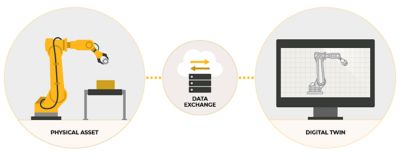
With advanced technology like digital twins, heavy machinery manufacturers and operators can improve equipment by monitoring asset health performance and implementing life cycle optimization practices.
For example, in the early stages, life cycle optimization can leverage simulation to improve design by testing the durability of machine components before production. In later stages, it can support the sustainable disposal and recycling of the machine and its components when the equipment reaches the end of life.
Let’s look at a real-life application of asset health performance and life cycle optimization using a mining truck as an example. To track asset health performance, a digital twin of the mining truck monitors its engine performance, predicting when parts need service. This improves maintenance and operation. Additionally, digital twin monitoring supports life cycle optimization beyond the operation phase with attention to efficiency, reliability, and sustainability. For example, instead of replacing the truck prematurely, predictive maintenance enables options like re-engineering to replace sacrificial parts. This extends the truck’s usability and lifespan, and part replacement is much less expensive than equipment replacement. It also reduces material waste.
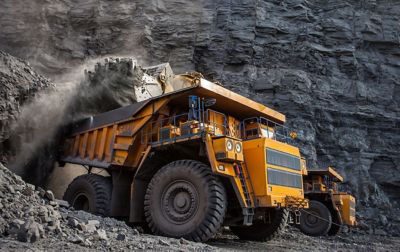
Digital twin technology enables predictive maintenance for haul trucks and other heavy machinery used in mining.
In another mining example, haul trucks carry an abundance of materials daily. During an asset health performance check, the mining truck’s digital twin could indicate that the tires are wearing out due to rough terrain. With this information, operators can adjust routes or driving techniques to reduce wear, prevent blowouts, and extend tire life, optimizing the machine’s life cycle. This actionable insight can significantly reduce tire replacement costs each year.
Benefit Holistically From Digital Engineering
According to the Digital Twin Consortium, digital twins are virtual representations of real-world entities and processes synchronized at a specified frequency and fidelity. Ansys TwinAI AI-powered digital twin software and the Ansys Twin Builder simulation-based digital twin platform enhance digital twins by combining insights from simulation with real-world data powered by artificial intelligence and machine learning (AI/ML) techniques. The resulting twin — a hybrid digital twin — produces greater accuracy by blending the predictive accuracy of physics-based simulation with insights from actual field behavior.
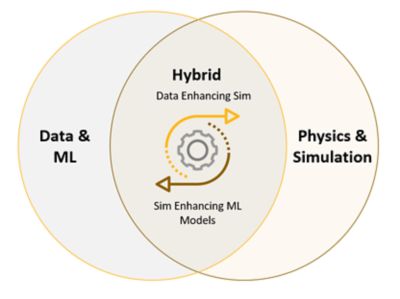
Ansys hybrid digital twins blend physics-based simulation and real-world data powered by artificial intelligence and machine learning (AI/ML) techniques.
Traditionally, engineers and designers integrate simulation to improve design or as a post-analysis verification tool. However, with advanced technologies like sensors, AI/ML, and digital twins, heavy machinery manufacturers and operators can leverage digital engineering throughout the entire product life cycle from design to retirement, including operations and maintenance (O&M), as demonstrated in the mining examples.
While Industry 4.0 centered on technology, Industry 5.0 emphasizes human-technology interaction and collaboration. The European Commission describes it as more comprehensive than 4.0, noting pillars for sustainability, human-centricity, and resilience. Digital engineering in the heavy machinery industry aligns with this holistic approach by supporting many facets of operation while producing significant benefits across the machine lifespan.
For example, digital engineering supports sustainability by improving fuel efficiency and reducing carbon emissions. Similar to how search engines or map applications suggest fuel-efficient routes, digital twins of tractors, bulldozers, or other heavy-duty vehicles recommend the most efficient paths to reduce fuel waste and improve productivity. This insight also helps determine optimal speeds and reduces part wear for heavy machinery operations. In addition, the ability to simulate different operational scenarios supports compliance with environmental standards.
Aligned with human-centricity, digital engineering puts humans at the center of the workflow, encouraging manufacturers and operators to interact and collaborate with digital technologies to improve equipment and increase efficiency.
In connection, using digital twins to monitor asset health performance enables operators to schedule maintenance ahead of breakdowns and failures. This bolsters the resilience of heavy machinery operations and connected industrial workflows.
Another advantage of digital engineering is smarter fleet management. For those overseeing large fleets of heavy machinery, such as mining haul trucks or forestry equipment, digital twins provide a centralized monitoring system to detect and improve potential issues across multiple machines.
Discover Digital Engineering at Ansys
Heavy machinery manufacturers and operators can improve operational efficiency by adopting digital engineering practices. With simulation-based digital twins and other advanced technologies, the heavy machinery industry can ensure asset health performance and life cycle optimization while increasing sustainability, meeting industry standards, and lowering costs.
Discover more about Ansys digital twin solutions and how Ansys can support your heavy machinery operations by visiting our Industrial Processes and Equipment Simulation Software Solutions page.
The Advantage Blog
The Ansys Advantage blog, featuring contributions from Ansys and other technology experts, keeps you updated on how Ansys simulation is powering innovation that drives human advancement.
